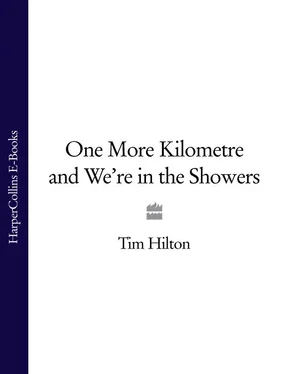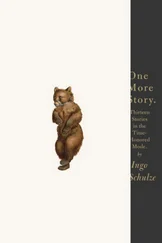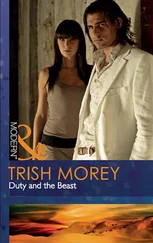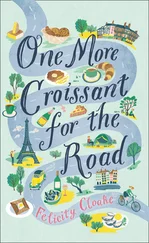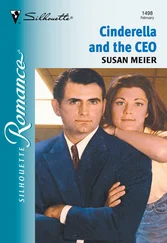It is clear that Blatchford’s unscientific form of socialism was suited to cyclists. In a short period following the launch of The Clarion , seventy cycling clubs were founded with ‘Clarion’ in their names. They used the paper’s masthead logo (winged young goddess blowing a trumpet) and repeated, time and again, that ‘fellowship’ was their bond. Thus a tradition was created. Even in the twenty-first century, ‘fellowship’ and ‘fraternity’ are the watchwords of British cycling associations of all sorts.
A number of the original Clarion clubs are still in existence, though many more have been disbanded. The first Clarion Cycling Club was founded in Birmingham in 1894. Later in that year more Clarion clubs were formed in Hanley, Liverpool, Bradford and Barnsley. In 1895 there were further foundations in Nottingham, Newcastle, Leeds, Rochdale, Blackburn, Wigan, Hyde and Nelson. Clearly, there was a northern bias, although there were Clarion clubs in London and other places in the south of England, notably Bristol and Portsmouth. The pattern probably reflects the circulation of the newspaper that was the clubs’ inspiration.
The Clarion phenomenon may be called a truly popular movement because the clubs were unregimented, non-hierarchical and had no specific political goal. The more political a Clarion club, the greater the danger that its spirit would be lost. A movement based on fellowship found it difficult to tolerate leaders or to develop committee structures. At the same time there had to be a certain amount of organisation. Someone had to look after the lists of members, send out comradely addresses, receive subscriptions and promote the inter-club time trials. Volunteers could always be found to perform these functions. Divisions arose in the Clarion clubs only when some members grew too keen on running things, or tried to make clubs more active within the formal labour movement.
In these ways the Clarion clubs have given us two leading characteristics of British cycling. First, cycling is not a political sport, but it does belong to the leftward side of humanity. Second, cyclists do not on the whole wish to be governed and are often unable to govern each other. The administration of cycling, from the smallest clubs to the largest, has often been a shambles. That’s the way most of us like it.
In the early Clarion movement, Blatchford sensed the coming dangers and showed himself to be on the side of disorder. It was well known that Clarion committees simply re-elected themselves in the warmth of the pub before getting back on their bikes. Some people disapproved of this easy-going wisdom, but not Blatchford. He thought that the Clarion clubs’ annual Sheffield conference ought to be a merry lunch and that speeches should be banned, except for toasts. He repeated the message in many Clarion editorials: ‘No leaders, no rules, no delegates, no machinery!’
Writing much later, in 1932, Blatchford remembered his editorial cry. He then lamented:
All went merrily for some years and then a number of earnest young men joined up, and there arose a demand for ‘organisation’. I pointed out at the time that the Fellowship was a genial crowd of congenial spirits and that it was impossible to organise friendship. But the Fellowship was organised and its glamour slowly faded. The old Fellowship gave us something precious which no organisation had to offer, the organised Fellowship could only go a little better than any other party organisation. And now the clouds began to gather …
That reference is to the onset of the First World War. The Clarion movement was at its height – at least in terms of membership – in 1913, with around 7,000 members. A pretty good figure, and one reason why the movement survived the Kaiser’s war. Many clubs then died, but there were enough people to keep up the cause of Clarion fellowship. A casualty of the war was The Clarion itself, which ceased publication in 1916. But the cyclists were not extinguished, and they are still up the road. If one cyclist says of another ‘He’s an old Clarion man’ or ‘She’s got a Clarion background’, we know that we are talking of someone with an especial pedigree.
Another reason for the longevity of the Clarion clubs is that they always included women. Cycling girls married fellow members and started Clarion families. At the last published count, on the occasion of the National Clarion Centenary in 1995, there were eighteen separate Clarion clubs with a combined membership of around 800 people. So life goes on as the wheels go round, and a number of celebrated veteran cyclists owe their lives to the Clarion movement. The most famous of them is Barry Hoban, multiple stage winner in the Tour de France in the 1960s and 1970s. Barry is the son of old Joe Hoban of the Calder Clarion CC, who on the occasion of the 1995 centenary was still riding his bike at the age of eighty-four and was one of the members who could reminisce about the half-century reunion fifty years before.
Although I love the thought of the Clarion movement the British League of Racing Cyclists gives me more exciting memories.
The story of the BLRC is one of protracted warfare with other cycling bodies. Internecine disputes lasted for sixteen years before a sort of truce was signed. The hostilities are not yet concluded. Much has been lost in futile bitterness. In the 1950s previously happy clubs were torn apart, and cyclists and potential sponsors left the sport. On the whole, though, the League was successful. It made British cycling modern and international. Furthermore, the BLRC represented a glorious rebellion. In what other sport, of any type, do we find the rank and file gathering together to overthrow their officials and governing bodies?
The civil war might not have been necessary if those rulers of cycling had not been so hidebound. Here, in brief, is their political history.
The Bicycle Union was founded in 1878 as an alliance of a few London clubs. By 1893 it was much enlarged, had absorbed members from outside the capital and decided to change its name to the National Cyclists Union. In the new century more and more clubs sought affiliation. As they did so, the leadership of the NCU appears to have become more conservative and autocratic. The NCU believed in cycle touring – as did everyone – but not in much else. In particular, it was wary of competitive cycling and held that all racing should be on cycle tracks.
The NCU opposed, indeed forbade, road racing. But what about record breaking in solo rides from one place to another? This kind of competition was already popular in the 1890s, but the NCU was hostile. Consequently, another body was formed, the Road Records Association, and in 1937 the Road Time Trials Council was founded to supervise the fast-growing sport of time trialling: that is, events in which the contestants start at intervals and ride alone. Both the NCU and the RTTC were united in opposition to road racing: that is, ‘massed-start’ events in which the riders start together, en ligne in the French expression.
This was the situation until the war years. Now enters a hero of the British bike game, Percy Stallard of the Wolverhampton RCC. He was a natural roadman and had a good record in domestic and international sport. Stallard represented Britain in the world amateur road championships at Monthléry in 1933, Leipzig in 1934 and Copenhagen in 1937. It is astonishing to note that when he went to Monthléry Stallard had ridden in only one massed-start event, at Donington Park, which was a motor racing circuit. So the race was not on open roads and could not contravene NCU regulations. Massed-start races had also been held at the Brooklands motor racing track and on the Isle of Man. But there had been few such events when Percy Stallard began his campaign in 1942.
Читать дальше
